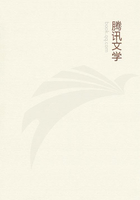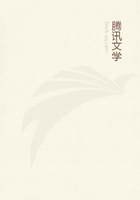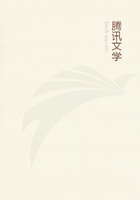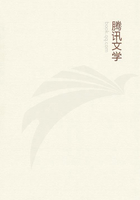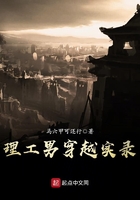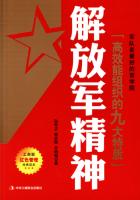THE MOQUI INDIANS
The Indians of Arizona are, perhaps, the most interesting of any of the American aborigines. They are as unique and picturesque as is the land which they inhabit; and the dead are no less so than the living.
The Pueblo Indians, with which the Moquis are classed, number altogether about ten thousand and are scattered in twenty-six villages over Arizona and New Mexico. They resemble each other in many respects, but do not all speak the same language. They represent several wholly disconnected stems and are classified linguistically by Brinton as belonging to the Uto-Aztecan, Kera, Tehua and Zuni stocks. He believes that the Pueblo civilization is not due to any one unusually gifted lineage, but is altogether a local product, developed in independent tribes by their peculiar environment, which is favorable to agriculture and sedentary pursuits.[8]
[8] The American Race, by D. G. Brinton, 1891.
The houses are constructed of stone and adobe, are several stories high and contain many apartments. None of the existing pueblos are as large as some that are in ruins which, judging by the quantity of debris, must have been huge affairs. Since the advent of the Spaniard the style of building has changed somewhat to conform to modern ideas, so that now some families live in separate one-story houses having doors and windows, instead, as formerly, only in large communal houses that were built and conducted on the communal plan.
Their manners and customs are peculiar to themselves and make an interesting study. Their civilization is entirely original, though modified to some extent by centuries of contact with the whites. They understand the Spanish language, but have not forgotten their mother tongue. They hold tenaciously to their old customs and have not changed materially during the past four hundred years.
During that time the Catholic missionaries endeavored to convert them to Christianity, but with only partial success. While they appeared to acquiesce, by giving formal obedience to the requirements of the new religion, they yet held sacred their old beliefs and in the privacy of the estufa practiced in secret the rites and ceremonies of their ancient faith.
The Spaniards undertook to conquer a free and independent people by teaching them dependence and submission, but signally failed.
After a struggle of two hundred and eighty years Spanish civilization withdrew and left the Pueblo civilization victorious.
Under successive Spanish, Mexican and American rule the Pueblo has preserved itself intact which fact stamps the Pueblo people as being eminently valiant, self-reliant and persevering. They are peaceable, industrious and hospitable and are said to be the best governed people in the world. As nearly as can be ascertained they are free from every gross vice and crime and Mr.
C. F. Lummis, who knows them well, believes them to be a crimeless people.
The Moquis of Arizona are the most primitive of the Pueblo Indians and are worthy representatives of their race. They are of the Aztecan branch of the Shoshonean family and probably the lineal descendents of the cliff dwellers. Their home is on the Painted Desert in northeastern Arizona where they have lived for many centuries. It is a barren and desolate spot and has been likened to Hades with its fires extinguished. Nevertheless it is an exceedingly interesting region and furnishes many attractions.
The landscape is highly picturesque and the phantasmagoric effects of the rarified atmosphere are bewitching.
In the early Spanish days Moqui land was designated as the Province of Tusayan and was shrouded in mystery. The seven Moqui towns were at one time regarded as the seven Cities of Cibola, but later it was decided that Zuni and not Moqui was the true Cibola.
When Coronado, at the head of his intrepid army, marched through the land in the year 1540, he procured native guides to aid him in exploring the country, hoping to find fabulous wealth which failed to materialize. He heard of a race of giants whom he wished to meet, but instead of finding them discovered a river with banks so high that they "seemed to be raised three or four leagues into the air." What he saw was the Colorado River with its gigantic canon walls and wealth of architectural grandeur and beauty. The bewildering sight naturally astonished him as it does every beholder. Think of a fissure in the earth over a mile deep! But the Grand Canon of Arizona is more that a simple fissure in the earth. It is composed of many canons which form a seemingly endless labyrinth of winding aisles and majestic avenues--fit promenades for the Gods.
The land of the Moquinos is full of surprises and, although they are not all as startling as the Grand Canon, they are sufficiently striking to make Arizona a wonderland that is second to none on the continent.
The Moquis live in seven towns or pueblos which are built upon three rocky mesas that are many miles apart. The mesas are about seven thousand feet above sea level and from six to eight hundred feet higher than the surrounding plain. Upon the first or eastern mesa are located the three towns of Te-wa, Si-chom-ovi and Wal-pi. Tewa is the newest of the three towns and was built by the Tehuan allies who came as refugees from the Rio Grande after the great rebellion of 1680. They were granted permission to build on the spot by agreeing to defend the Gap, where the trail leaves the mesa, against all intruders.
Upon the second or middle mesa are the towns of Mi-shong-novi, Shi-pauli-ovi and Shong-o-pavi; and on the third mesa is 0-rai-bi, which is the largest of the Moqui villages, and equal to the other six in size and population. The entire population of the seven Moqui towns numbers about two thousand souls.


